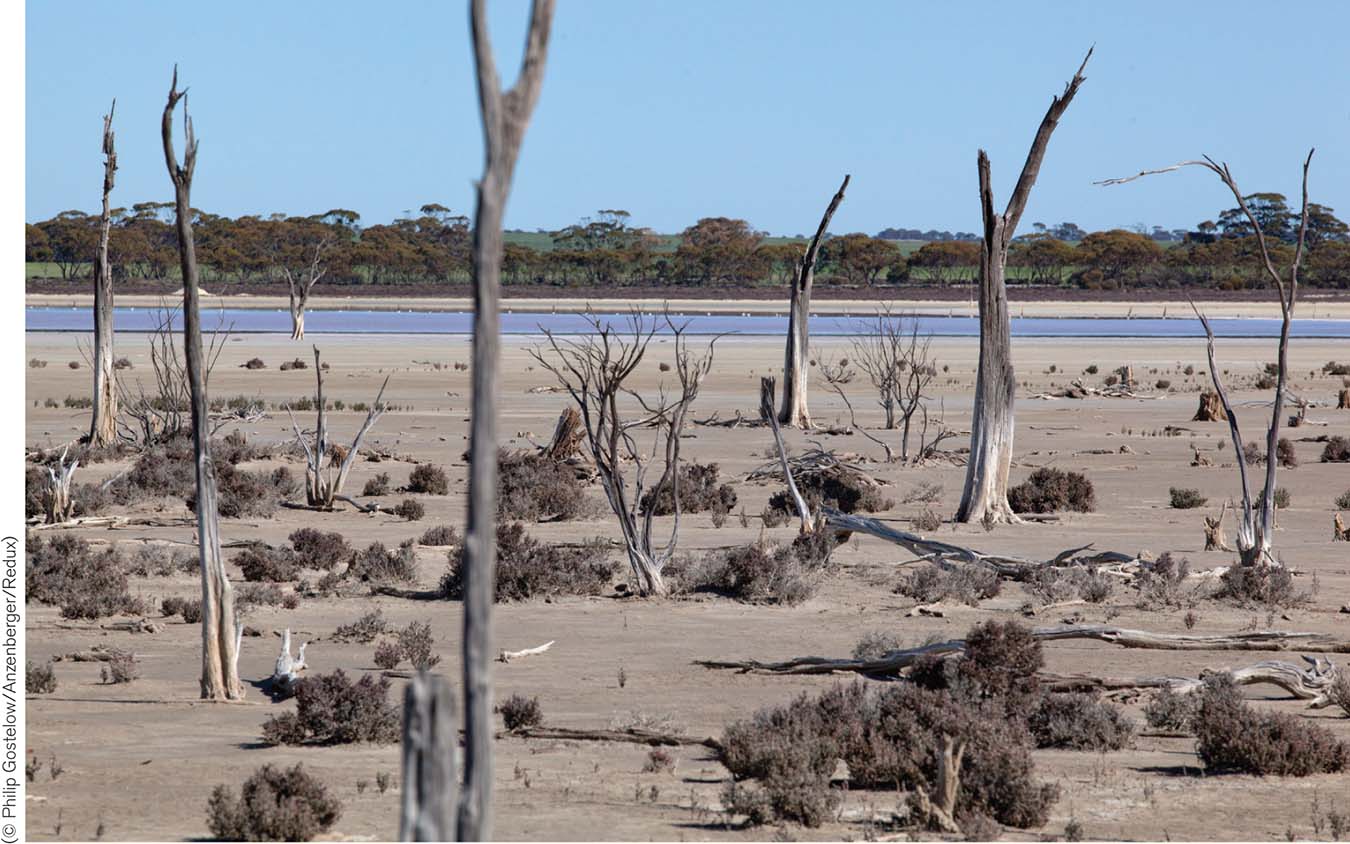7.7 Irrigation can damage soils
205
One of the common ways to increase the agricultural productivity of farmlands in arid areas is through irrigation, which is a system for artificially delivering water to crops. Digging ditches and other simple forms of irrigation date back thousands of years. Irrigation can be sustainable, but it also has the potential to waste freshwater resources and damage soils.
Irrigation Systems
As we saw in Chapter 6, irrigation places one of the largest demands on Earth’s supplies of freshwater. By current estimates, irrigation accounts for nearly 70% of water withdrawals from surface and groundwater around the world and threatens biodiversity by reducing the availability of water in freshwater ecosystems. This is a particularly serious concern in arid regions, where freshwater ecosystems are most vulnerable to competing water demands such as municipal and industrial use. In addition, although irrigation can increase crop production, it can also damage soils in ways that reduce crop production.
There are many ways of applying irrigation water to fields, but today the three main techniques are flood, sprinkler or spray, and drip irrigation. Flood irrigation moves water across the surface of a field guided by gravity and berms (raised barriers) or by a series of furrows (small channels in the ground) (Figure 7.21a). The advantage of flood irrigation is that it does not require expensive equipment. It can, however, waste a lot of water.


What criteria would you use for dividing up water supplies during wet periods and during droughts?
Sprinkler, or spray, irrigation applies water to agricultural fields by pumping pressurized water through sprinkler or spray nozzles. The most common type of sprinkler irrigation, the center-
Drip irrigation, which delivers water and often nutrients directly to the rooting zone of crop plants, is perhaps the most precise and efficient irrigation system in common use (Figure 7.21c). But because this system is expensive, farmers use drip irrigation only on high-
Irrigation and Waterlogged and Saline Soils
waterlogged soil A condition in which the water table is at or near the soil surface.
Applying water to an agricultural field faster than it drains, as can happen with flood irrigation, may produce waterlogged soil, where the water table is at or near the soil surface (Figure 7.22). Terrestrial plants require sufficient soil moisture, but because waterlogged soil has its pore spaces filled with water instead of air, it therefore deprives plant roots of the oxygen they need.

salinization The process of salt buildup in a soil.
Irrigation combined with inadequate soil drainage can also result in soil salinization, a process of salt buildup in a soil. If irrigation raises the water table, salts are not flushed away but rather deposited in topsoil as water evaporates from the soil surface.
206

Why is soil salinization generally more of a problem in hot, dry climates?
Waterlogged and saline soils are a global agricultural problem. Many millions of hectares of irrigated agricultural land, approximately one-

Think About It
Avoiding soil salinization in irrigated fields depends on maintaining adequate soil drainage so that salts are leached down the soil profile and drained away with groundwater. How might this practice affect the environment?
Salinization of soils has taken place in many landscapes that have never been irrigated. How can salinization in such places be explained?
How are waterlogging and salinization of soils, in fact, different aspects of the same general problem?